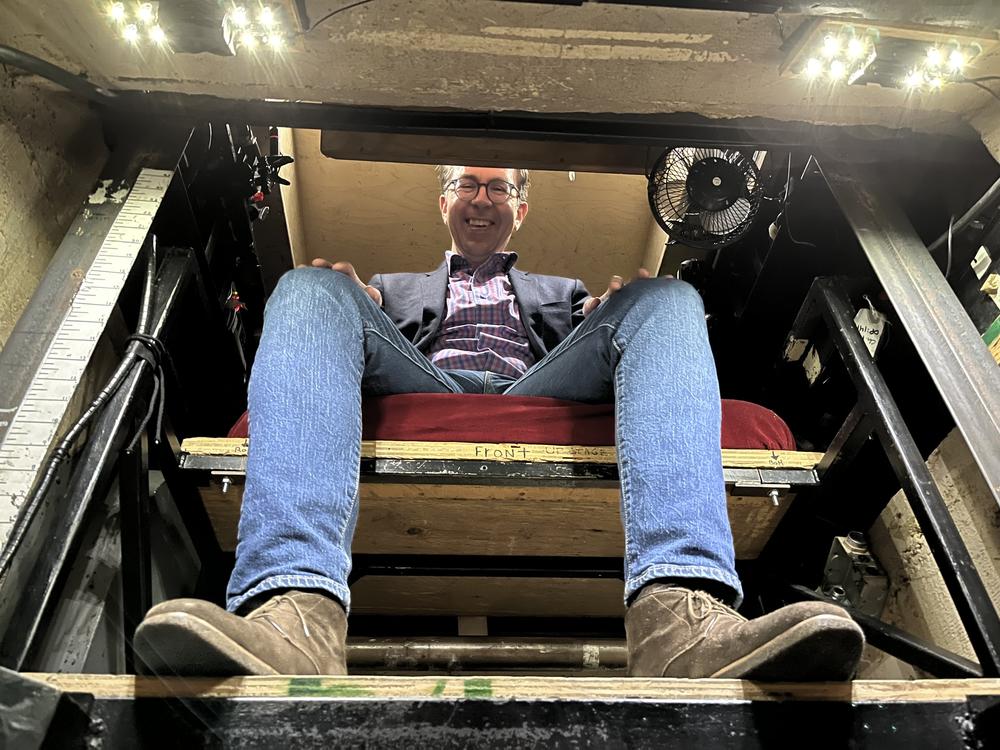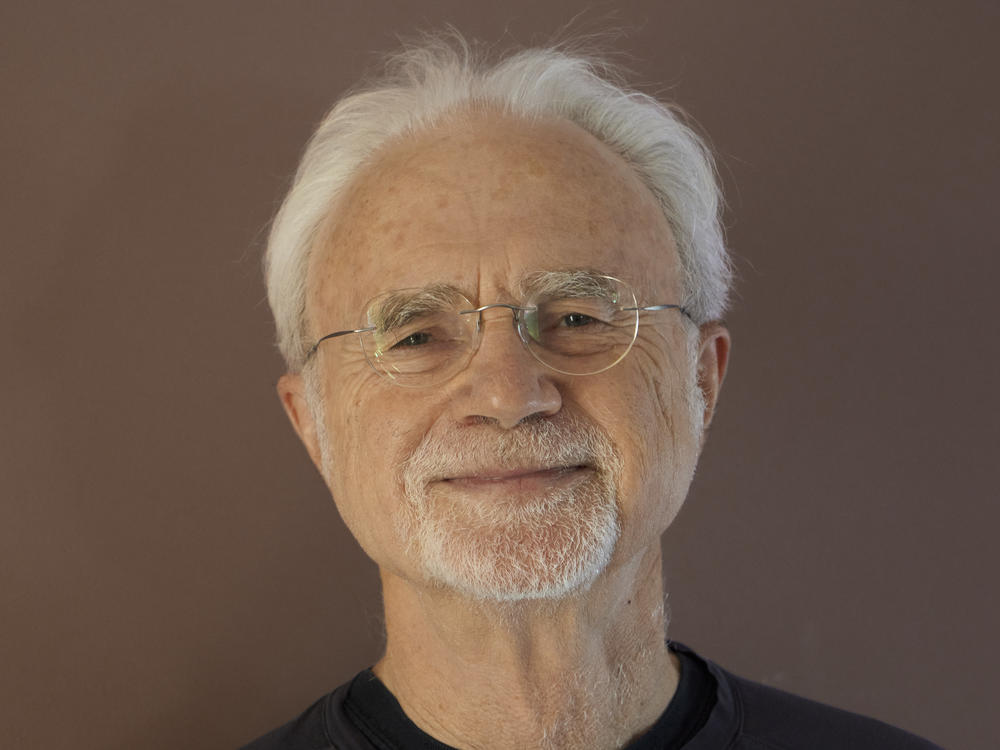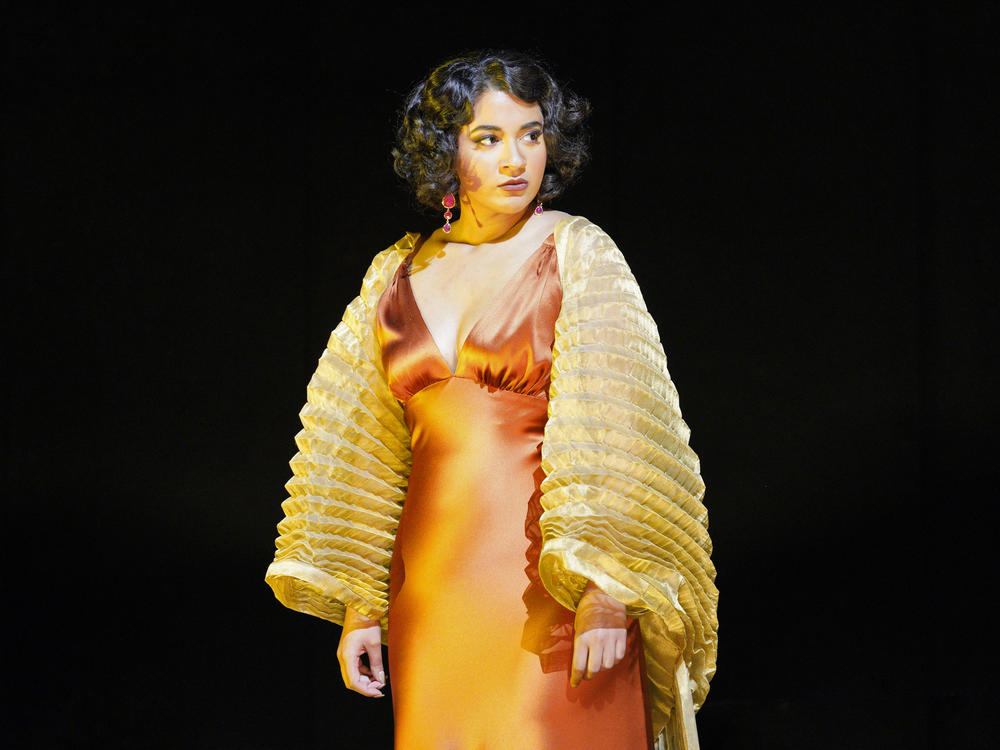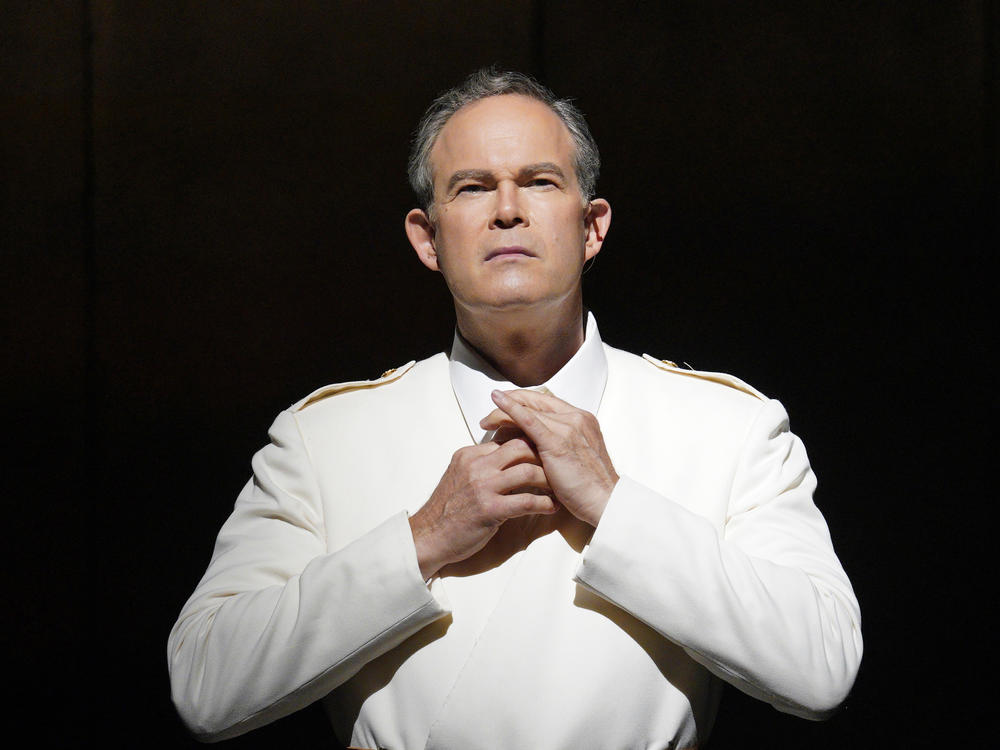Section Branding
Header Content
The hidden world of an opera prompter
Primary Content
To reach the prompter's box at the home of the San Francisco Opera, Matthew Piatt heads under the stage and walks down a long, narrow passageway.
Then he shimmies up a metal ladder.
"I always have to be careful not to rip my pants," Piatt says, as he hoists himself into a seat and pushes a button to propel himself upward several feet, using a hydraulic lift. From this vantage point, Piatt can view the entire stage through an opening that's about the size of the average suitcase.
Piatt is the prompter for the company's production of Antony and Cleopatra, a new opera adapted from the Shakespeare play by John Adams, who is considered to be one of the world's greatest living composers. Like the play, it's about the star-crossed romance of the Roman general and the Egyptian queen.
The prompter is invisible to the audience, and he may be only one person among the roughly 250-strong cast and crew, but he plays a major role in keeping everything from flying off the rails.
Inside his box, it's bare bones. There's a wooden stand to hold a musical score, monitors to view the conductor, a fan to deal with the heat, a phone to call stage management in case the audio or video feed goes out, and a small electronic keyboard, conveniently Velcroed to the side of the box, to help the prompter give pitches — though Piatt said this is rarely needed, as most people who do this job have perfect pitch.
"We always joke about putting in a wet bar, but we haven't done that yet," he says, with a chuckle.
Piatt will spend the entirety of every performance during the run concealed under a hood in this stuffy little enclosure, located right on the edge of the stage, front and center.
Not all opera productions use prompters. But performers don't wear earpieces, and it can be tough to hear the orchestra properly from the stage; it's likewise challenging to see the conductor under the glaring lights. The prompter helps with cues in difficult moments by speaking, shouting or waving his arms in their direction.
Piatt has been studying Adams's rhythmically and tonally complex score for months in preparation ("Basically, you have to have the score memorized," he says), so that he can help the performers hit all the right notes in all the right places. He also attends every rehearsal, and makes notes about what cues to give in his score, and meets with each cast member individually to develop a prompting strategy tailored specifically for that person.
"When I tell people what I do for a living, most people are not even aware that there's this box," says Piatt. "And if they are aware, they think it conceals lights or something."
A brittle performance — or a sense of comfort?
The operas of John Adams employ massive forces, driving rhythms and vocal lines that mimic human speech patterns. However, the world premiere productions of works like Dr. Atomic and Girls of the Golden West — which both took place under the auspices of San Francisco Opera — didn't use prompters for performances. That's largely because director Peter Sellars, who collaborated with the composer on these productions, says prompters can distract performers from being in the moment.
"With a prompter, you don't get any emotional grounding, you're just desperately trying to save your skin," he says. "And so it creates a rather brittle performance."
Sellars says he'd rather the performers' improvise if they bungle something until they can get back on track.
But Adams says his latest work is especially complex and disorienting for the performers. There are few melodic arias and the scenes are packed with fast-paced, back-and-forth between characters.
"The idea of actually learning all these entrances and bringing them in exactly where they belong is really a treacherous thing," Adams says. "All I care about is that the singers are secure and comfortable."
Prompting in action
Adams originally wrote the role of Cleopatra for someone else (Julia Bullock, who had to pull out of the production around six months ago owing to pregnancy.) So when soprano Amina Edris stepped in, he had to start changing notes during rehearsals to better suit the timbre and range of her voice.
"I'm not gonna lie," says Edris, who had never sung an Adams opera before. "It's a little bit overwhelming to be, like, 'Okay, just after I memorized this part, now I have to reprogram how I think of it again and learn a different version of it.'"
That's why she's grateful for the safety net that is Matthew Piatt.
"Matt is the glue that holds this show together," she says.
In audio captured in the prompter's box during a recent rehearsal, you can hear Piatt cueing Edris as she sings a scene. He sounds loud. But it's directed toward the stage, so the audience doesn't hear the prompter feeding pitches, lines and rhythms to the Queen of Egypt.
Even seasoned performers of Adams' operas are relieved there's a prompter. Baritone Gerald Finley starred in the world premiere production of Adams' Dr. Atomic in 2005. Now he's playing Antony — a Roman general with a tricky death scene. He has to sing while face down on a staircase upstage. From that position, he can't see the conductor or a monitor.
"I can hear [Piatt] counting and giving me literally the beats," Finley says. "I don't know what I would do in fact if Matt wasn't there. Without Matt, I couldn't die."
Taking pride in private thanks
Every now and again, during curtain call, a conductor, director or cast member will lean down to the hood at the edge of the stage and shake the prompter's hand in gratitude for mishaps quietly solved or prevented.
Piatt, who's been doing this job for more than a decade, says he gets the greatest satisfaction from more private acknowledgements of his talents.
"The thing that I take the most pride in is when a singer says, 'I feel really safe when you're at the prompt box,'" he says. "It is my goal so that they can give the best performance possible. After all, that's why people go to the opera."
San Francisco Opera's Antony and Cleopatra runs at the War Memorial Opera House in San Francisco through Oct. 5, 2022.
Copyright 2022 NPR. To see more, visit https://www.npr.org.




